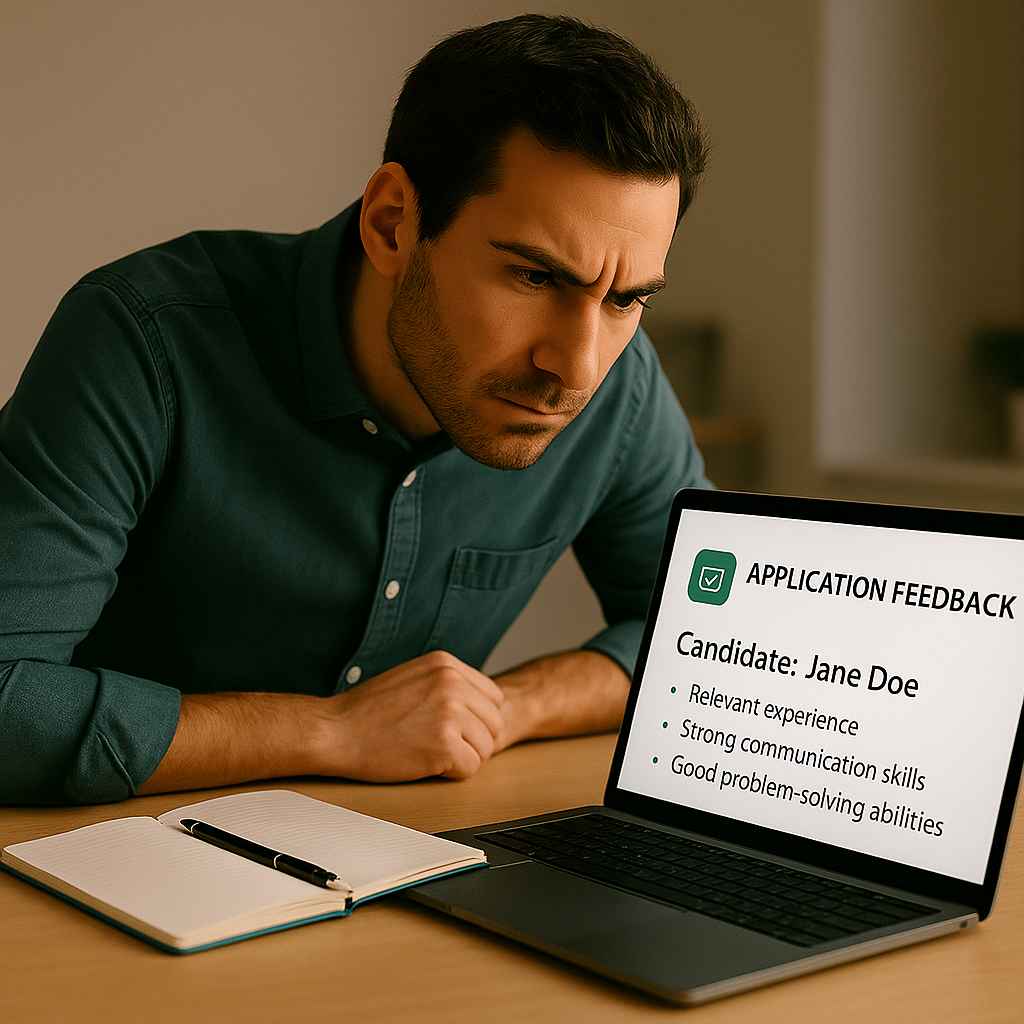Introduction
Trust and consistent team feedback are the backbone of any successful recruitment process. The stakes are high — not just in terms of cost, but also the impact on your team’s culture and productivity. Imagine the following: a candidate is hired over the objections of a key team member. Within a month, that hire doesn’t work out, leaving not just a vacancy but also a ripple effect of uncertainty.
This is not just a hiring misstep to correct and move past. The situation is complicated because the team member who raised the alarm is now exhibiting toxic attitudes. Are you dealing with a toxic employee, or did you ignore a legitimate red flag in your hiring process? Or perhaps both? Let’s examine these questions to help you build a stronger, more resilient hiring approach.
Listening to Team Feedback: The First Line of Defense
When it comes to onboarding new talent, few voices are as crucial as those of your current team members. They work side by side with new hires every day, often picking up on cues interviewers might miss. Because of their day-to-day proximity, they’re uniquely equipped to gauge if someone will mesh well with the group’s dynamic. Their input, when gathered as structured team feedback, offers early signals about culture fit and collaboration potential.
Research by the Society for Human Resource Management (SHRM) underscores this, noting that teams who weigh input from trusted staff members experience fewer bad hires and enjoy stronger morale. Ignoring a hard “no” or dismissing input risks far more than just the monetary cost — it can lead to strife, lost productivity, and eroded team spirit.
Why Feedback Is Often Overlooked
- Urgency to Fill Roles: Hiring managers might expedite decisions, sometimes bypassing valuable team feedback, to avoid slowing momentum, especially in high-growth environments.
- Subjectivity Concerns: Managers sometimes discount feedback that doesn’t come with concrete evidence.
- Hierarchy Barriers: Junior team members may not feel empowered to dissent, especially against leadership enthusiasm for a candidate.
The Role of Toxic Employees: Two Problems, One Process

The case study introduces another dimension: toxicity within your own team. The individual who warned against the hire is now showing signs of negative, possibly harmful, behavior themselves, further complicating how team feedback is interpreted and acted upon. Toxic coworkers are a growing concern, with studies showing they can tank productivity, spread negativity, and instigate conflict.
In fact, research published in Organizational Dynamics explores how toxic behavior can spread like a virus through teams, negatively influencing communication, collaboration, and even decision-making quality across departments. This makes it crucial to address both visible and hidden toxicity early in the hiring and management process.
Signs of Toxic Behavior May Include
- Consistent negativity or cynicism
- Passive-aggressive communication
- Undermining team consensus
- Spreading rumors or refusing to collaborate
This presents two interconnected problems within your hiring and management process:
- Ignoring Valid Warnings: Was the team member’s concern rooted in valuable insight? If so, why wasn’t it heeded?
- Tolerating Toxicity: Are signals of a disruptive attitude being excused because the focus remains so tightly on filling vacancies quickly?
Leaders need to take a step back and examine not just the credentials of new candidates, but the ongoing behavior of those within the team. Allowing toxicity to stew unchecked while also ignoring valuable screening input can undermine your team environment long term.
Impact on Team Dynamics
Every ignored warning leaves a mark on how a team interacts. Dismissing valid team feedback can make employees feel devalued or unheard. The aftershock is rarely immediate but tends to manifest in subtle ways:
Lingering Issues from Overlooked Feedback
- Subtle Negativity: A sense of frustration may grow in those who felt unheard, or a negative new hire may reinforce bad attitudes, creating lasting discomfort.
- Passive-Aggressive Behavior: Frustration about the hiring process can morph into behind-the-scenes obstacles or withheld communication, hurting collaboration.
- Communication Breakdown: Over time, team cohesion may fall apart, making it harder to share honest input or rally around group decisions.
Meanwhile, when toxic employees remain unchecked, they may isolate peers, create stress, and drive out top performers. Both routes damage morale, productivity, and ultimately the employer brand.
Best Practices for a Robust Hiring Process
Building robust, fair, and transparent hiring practices helps you address these dual challenges.
Key Steps:
- Gather Comprehensive Feedback: Involve the actual team in interviews, using tools like standardized Candidate Scorecards to structure and record every opinion. This ensures feedback is not just anecdotal, but quantifiable and traceable laying the foundation for effective team feedback analysis.
- Heed Hard “No”s: Treat strong negative input seriously — even without clear, objective reasons. Sometimes, a gut feeling is rooted in real experience with group dynamics.
- Assess Cultural and Team Fit: Go beyond the resume. Use Employee Assessment Software to objectively measure alignment with core values, attitudes, and working styles.
- Review Existing Employee Behavior: If a team member frequently opposes hires or sows discord, address their behaviors before making important staffing decisions. Consider regular check-ins or even leveraging conflict resolution frameworks.
- Document Feedback: Keep clear, organized feedback records with every hiring cycle; not only is this useful for defending decisions, but it allows you to spot patterns and revisit choices objectively if issues arise later.
- Monitor Early Performance: After hiring, proactively schedule 30- and 90-day check-ins with both the new employee and their coworkers. Early intervention can prevent long-term issues.
| Step | Tool/Approach |
|---|---|
| Gather feedback | Candidate Scorecards, panel interviews |
| Heed hard “no”s | Structured debriefs, anonymous surveys |
| Assess cultural fit | Employee Assessment Software, DISC profiles |
| Review toxicity | Peer feedback, performance management |
| Document input | Digital scorecards, HR management platforms |
| Monitor integration | Regular check-ins, workflow management |
Adopting a structured process isn’t just about preventing bad hires — it also protects your team’s health and cohesion.
The Hidden Costs of Ignoring Team Input

Ignoring a clear team objection can cost more than the failed hire:
- Higher Turnover: Team morale suffers, driving away top performers and costing months of recruiting and onboarding new staff.
- Lost Productivity: Distrust, tension, and cliques slow down workflows, often driving project delays.
- Eroded Culture: The cost is more than financial — a damaged culture can take years to recover, impacting hiring success.
Even worse, by allowing a toxic team member to influence hiring or remain unchecked, you send an implicit message: negativity is tolerated. Quality talent, sensing this, will seek healthier environments.
Proven Strategies to Balance Team Feedback and Cultural Fit
Success hinges on integrating structured feedback with sound judgment. Consider these actionable strategies:
- Anonymous Feedback During Interviews: Sometimes, junior team members aren’t comfortable sharing objections in public. Anonymous scorecards encourage candor.
- Standardized Candidate Assessments: Provide equal criteria for evaluation and remove subjectivity.
- Predefined Warning Procedures: Clearly outline what happens when a team member voices a hard “no”, from follow-up interviews to leadership reviews.
Want to learn more about aligning hiring with long-term business success? Check out our guide on Cultural Fit: The Key to Hiring and Business Success.
Related Insights
- Clear Communication in Recruitment Drives Better Hiring Results
- Effective Hiring Processes for Fast-Growing Companies
- How Job Tenure Influences New Role Performance in Recruitment
Conclusion: Act with Clarity and Intent
Every hard “no” from your team deserves thoughtful consideration. Overlooking these warnings or tolerating underlying toxicity sends ripples through your organization in morale, productivity, and even your employer brand. Leaders must ensure structured opportunities for feedback, direct communication about team dynamics, and diligence in addressing toxicity at all levels.
A clear, structured hiring process that unites team feedback with practical assessment tools will help you avoid costly mistakes and strengthen your organizational culture. When in doubt, err on the side of caution and curiosity — your future team will thank you.
Ready to enhance your hiring strategy and empower your team? Schedule a free demo with our hiring experts to discover how you can embed best practices into every recruitment decision.




